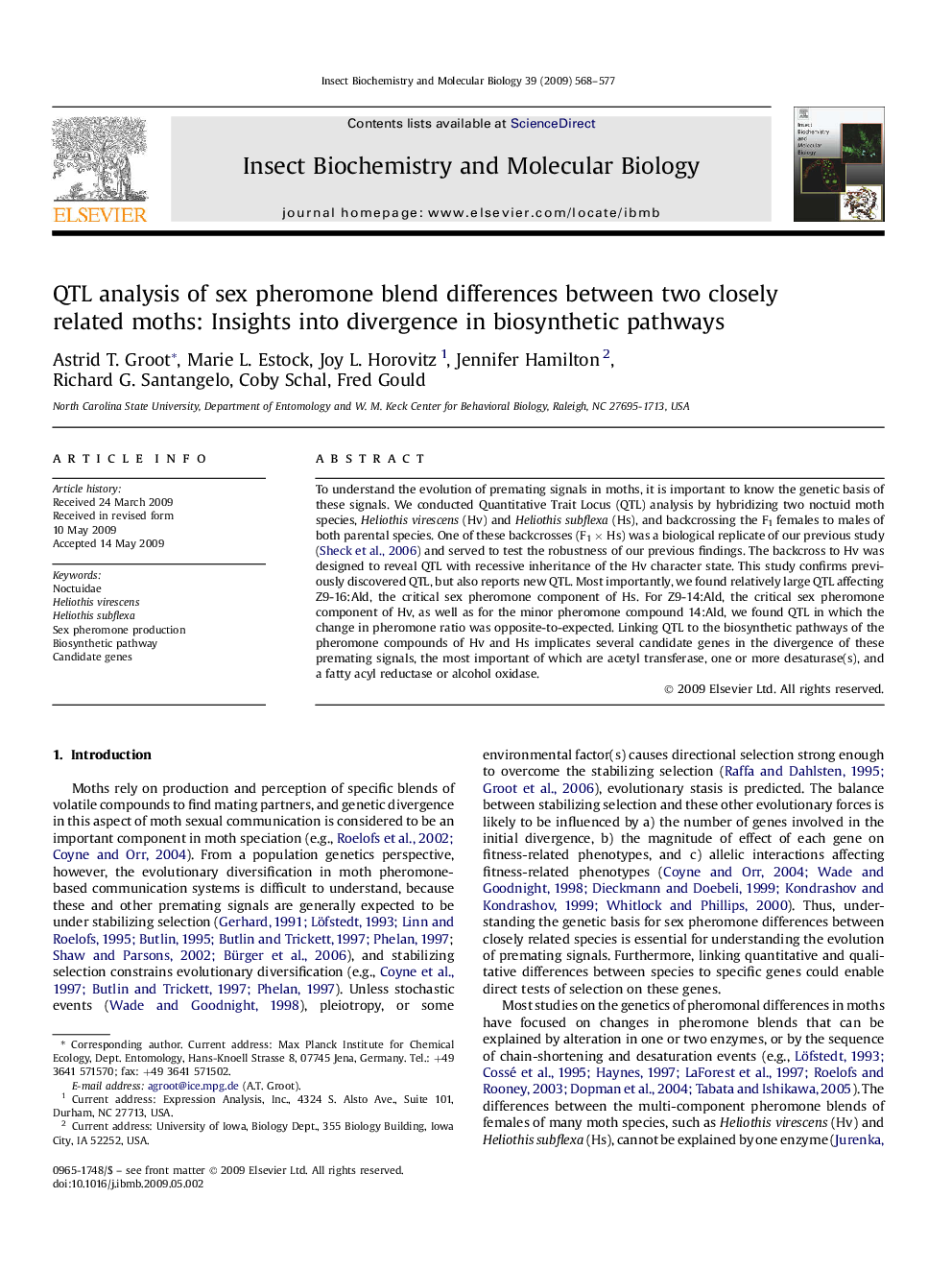| Article ID | Journal | Published Year | Pages | File Type |
|---|---|---|---|---|
| 1982691 | Insect Biochemistry and Molecular Biology | 2009 | 10 Pages |
To understand the evolution of premating signals in moths, it is important to know the genetic basis of these signals. We conducted Quantitative Trait Locus (QTL) analysis by hybridizing two noctuid moth species, Heliothis virescens (Hv) and Heliothis subflexa (Hs), and backcrossing the F1 females to males of both parental species. One of these backcrosses (F1 × Hs) was a biological replicate of our previous study (Sheck et al., 2006) and served to test the robustness of our previous findings. The backcross to Hv was designed to reveal QTL with recessive inheritance of the Hv character state. This study confirms previously discovered QTL, but also reports new QTL. Most importantly, we found relatively large QTL affecting Z9-16:Ald, the critical sex pheromone component of Hs. For Z9-14:Ald, the critical sex pheromone component of Hv, as well as for the minor pheromone compound 14:Ald, we found QTL in which the change in pheromone ratio was opposite-to-expected. Linking QTL to the biosynthetic pathways of the pheromone compounds of Hv and Hs implicates several candidate genes in the divergence of these premating signals, the most important of which are acetyl transferase, one or more desaturase(s), and a fatty acyl reductase or alcohol oxidase.
